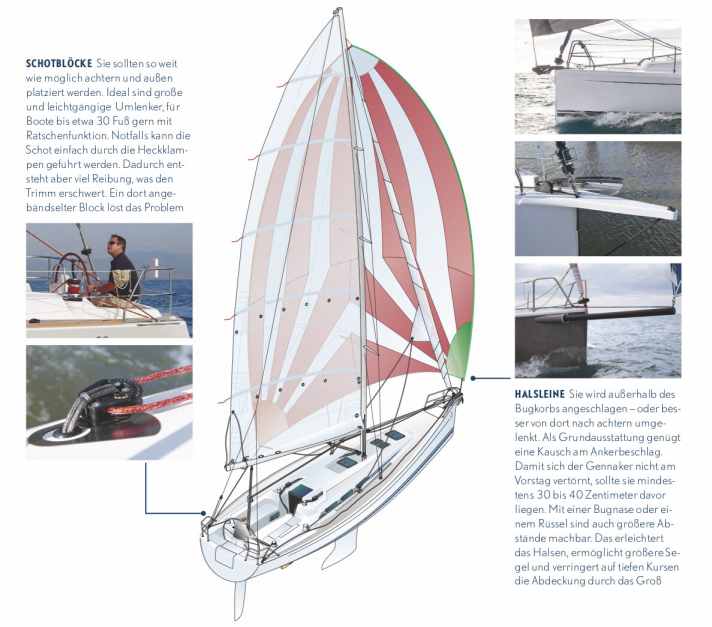
If you want to get to leeward faster than with the genoa hanging limply behind the mainsail, use a gennaker, code zero or spinnaker. Depending on the type of sail, additional equipment may be required.

Gennakers are the most frugal. Apart from an attachment point for the jib line, a halyard that comes out of the mast above the forestay fitting and two deflection blocks for the sheets, no other hardware is required. However, opinions differ when it comes to the deflection point. Should it be as far forward of the forestay as possible, or is a block on the well-fixed anchor enough? Both will work, but the set-up has an impact on the manoeuvre sequence when jibing. In addition: What retrofit solutions are available for trunks or bow nose, what are the advantages and disadvantages of the systems and what should be considered when guiding the sheet.
If you have gennaker equipment, you can set a Code Zero with little effort. Strictly speaking, this sail is made for upwind courses. Especially in light winds, it accelerates light performance cruisers considerably. As a result, the apparent wind is much more favourable and the course becomes an upwind course.
In order to set the downwind turbo, almost the same fittings are required as for the gennaker, with one difference: in order for the sail, which is being ridden on the flying stay, to retain its shape higher upwind and deliver the desired propulsion, the luff must be set much more strongly. A halyard with a 2:1 reduction ratio is therefore almost obligatory.
Spinnaker sailing is still regarded as the supreme discipline on the way to leeward. However, some additional investment is required at the time of purchase. In addition to the sail, a spinnaker pole with toppnant and downhaul plus the corresponding mast attachment are absolutely essential, as are barbers for the sheets or additional backhauls, and finally the pole also has to be stored somewhere.
